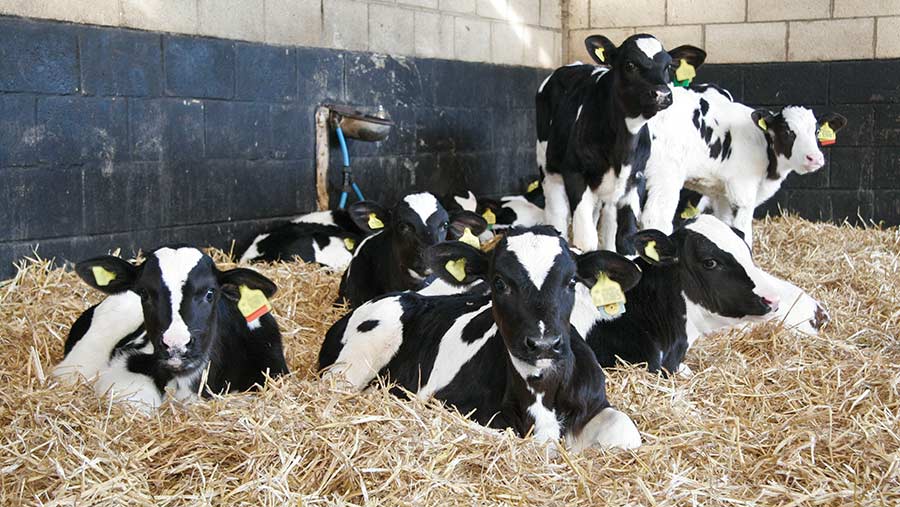Advice on reducing pneumonia risk as autumn weather swings
 © Tim Scrivener
© Tim Scrivener Pneumonia prevention should be top of the agenda this autumn as high humidity and swings in ambient temperatures are creating the perfect storm for the disease.
Dr Gwen Davies of Nantwich Farm Vets says farmers who have not generally suffered with calf pneumonia last year are tending to see issues this autumn.
This is translating into high pneumonia treatment rates.
See also: Why calf cough is unreliable as early warning for pneumonia
Swings in temperature on the same day from 20C to 10C are also increasing stress and “knocking calves”.
In some autumn-calving herds, Gwen has been vaccinating calves earlier than usual because of increased disease pressure. She has also seen an increase in treatment rates in all-year-round herds.
“High rainfall this summer has led to an increase in humidity levels,” she says. “In humid environments, that’s when we get RSV [respiratory syncytial virus] bugs thriving.
“The humidity also contributes to increases in total airborne bacterial counts, which can lead to calves developing bacterial pneumonias.”
Effect on calves
RSV is generally very aggressive, resulting in calves with high temperatures of up to 41.5C, as well as the general clinical signs of pneumonia:
- High temperature
- Coughing
- Increased respiratory rate and effort (blowing)
- Discharge (clear or full of pus) from eyes and nose
- Loss of appetite.
RSV outbreaks tend to be acute onset pneumonia with high mortality and morbidity in groups of calves, says Gwen.
Bacterial pneumonias, by contrast, cause a range of presentations, from acute disease to chronic, low-grade disease.
“When it comes to RSV, some strains can be so severe that calves die before you’ve had a chance to spot them – though thankfully, this is uncommon.
“Survival is very much dependent on prompt treatment, using the correct drugs and correct administration methods and dose rates, as well as overall calf immunity,” she says.
“If farms are poor at colostrum management, they might see increased mortality and morbidity rates because of poor immunity and lack of appropriate immune response.”
Reducing moisture
Because RSV thrives in humid conditions, reducing the amount of moisture in the calf environment and ensuring appropriate drainage are key to reducing rates of pneumonia.
“High levels of urine are also detrimental,” says Gwen. “This is because urine is broken down to ammonia, which is vaporised and inhaled by the calf, causing damage to the lining of the lungs.
“This compromises a key part of the immune system called mucosal immunity.”
She advises the following:
- Keep stocking rates as low as possible. Aim for 2sq m bedding space a calf
- Bed up regularly and ensure the calf’s environment is as dry as possible
- Assess housing and prevent draughts at calf level
- Speak to your farm vet about an appropriate vaccination plan.
In the face of an outbreak, vaccination is recommended as well as treatment with appropriate antibiotics and anti-inflammatories.
Cost and productivity effects of calf pneumonia
- Average cost/case of pneumonia (drugs, labour etc) £53
- Delay to age at first calving Two weeks*
- Reduction in first-lactation yield 4%**
- Reduction in second-lactation yield 8%**
- Reduction in number of overall days in milk 109***
Sources: *Van Der Fels Klerx, 2002; **Morrison, 2011; ***Bach, 2011
